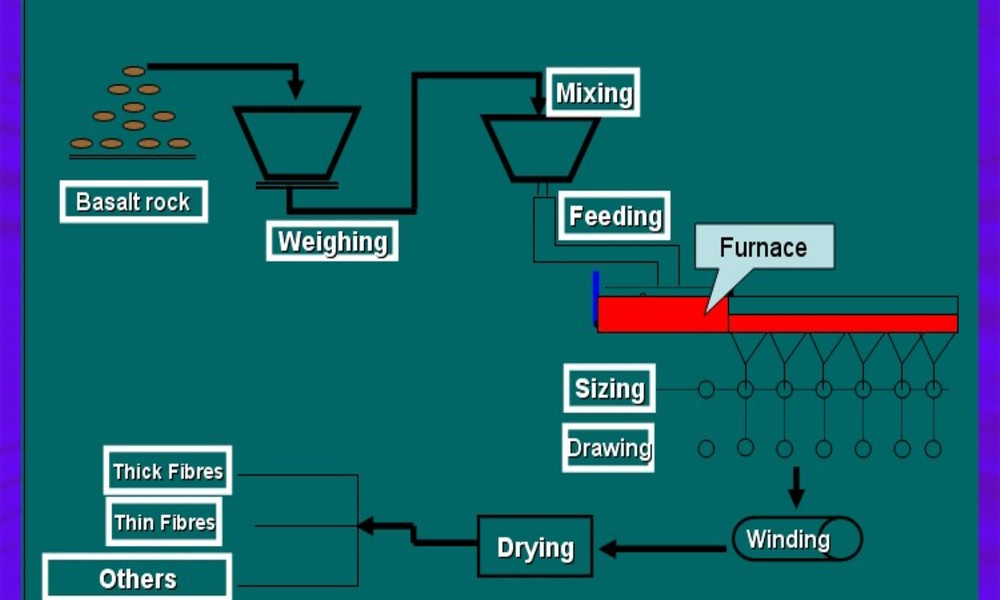What is Basalt Fibre?
Excelement® basalt fibre is made from crushed lava rocks with specific
chemical compositions mined from chosen quarries. Unlike glass fibre, no other materials are added, the basalt rock is simply cleaned and then melted down to around 1,450 °C. The molten rock is then extruded through small orifices at different speeds to produce continuous filaments of basalt fibre. The fibres typically have a filament diameter between 9 and 20 µm.
Fibre production process:

Chemical constituents of basalt rocks:
Not all basalt rocks can be good to make continuous filament fibres. The typical chemical constituents are SiO2, Al2O3, CaO, MgO, Na2O, K2O, TiO2, Fe2O3, FeO. For instance, the following form shows the typical range of various constituents in basalt rock that would be suitable to make continuous filament fibres.
| Components | Percentage (%) |
| SiO2 | 51.5~59.5 |
| Al2O3 | 14.5~18.5 |
| CaO | 6.0~9.5 |
| MgO | 3.0~5.5 |
| Na2O+K2O | 3.5~5.5 |
| TiO2 | 0.5~2.5 |
| Fe2O3+FeO | 9.0~13.5 |
| Others | 0.10~0.15 |
Effects of the constituents on the properties of the fibre have been studied in the past, based on existing literature survey that can be generally summarised as below although there might be some different views amongst researchers:
- Al2O3 increases the viscosity of the melt and chemical stability
- SiO2 and Al2O3 affect tensile properties.
- Fe2O3 and FeO alter the melting parameters by increasing the homogenization period, crystallization temperature; and thermal conductivity, high-temp performance of the final products.
- CaO, TiO2, MgO increase water resistance and resistance to aggressive media
- Na2O and K2O mainly increase the corrosion resistance in alkali.
Key Features of Basalt Fibre:
Health, Safety and the Environment
- No toxic reaction and no health hazards (unlike mineral fibres)
- Low Carbon Footprint (LCF) – greener than any other synthetic fiber including fiberglass
- Inert to earth and recyclable (unlike plastic fibres)
Excellent properties outperforming other synthetic fibres
- Ultra-high specific strength (3 x stronger and lighter than steel fiber)
- High elastic modulus
- Good elongation rate (up to 3.5%)
- Extreme working temperature between – 269oC and +750oC
- Extremely good chemical resistance (to both acidic and alkaline environments)
- Superior sound absorption (0.9-0.99)
- Heat insulating properties (3 x better than asbestos)
- Immune to UV light
- Does not absorb radio-active radiations
- Low water absorbency (less than 0.1%)
- Electromagnetic transparent (good for special buildings)
- Excellent heat vibration stability
- Excellent electrical insulation
- Similar thermal expansion co-efficient to concrete
All rights reserved. © Excelement Technology Ltd. 2010-2023
